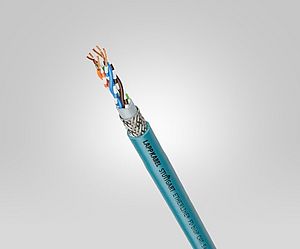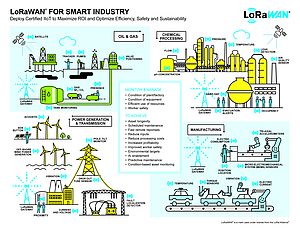The deadline for compliance with Article 8 of the EU Energy Efficiency Directive 2012/27/EU (also known as the EU EED) is now just a few months away-December 5th 2015, to be exact. That's the date by which businesses must conduct the first of the four-yearly energy efficiency audits that the Directive calls for.
In short, if you're a business with at least 250 employees, or annual revenues of over €50 million and an annual balance sheet exceeding €43 million, the clock is ticking. In every European Union Member State where your operations meet the 250 employee / financial criteria, you must comply.
But comply to what, exactly? And how? Because compliance, it turns out, involves addressing some fairly important questions.
Steady progress as the deadline draws near
Unfortunately, the answers to these questions aren't always clear. As with any European Directive, the requirements must first be drafted into each Member State's national law. And despite the closeness of the December 5th deadline, a number of countries have yet to complete this.
The good news is that over the past few months, many European economies have made progress in clarifying their national positions on the Directive.
Germany, for one, has enacted its law in April, thereby eliminating a lot of uncertainty. In addition, the Netherlands have published updated legislation and practical guidelines for the implementation in July. And France has taken a step forward, too, by clarifying the penalty that it will impose for non-compliance: 2 to 4% of a company's annual sales revenues. So gradually, at a high level, the pieces of the puzzle are becoming clearer.
Understanding the compliance regime
But what isn't becoming clearer to companies is how best to determine how the underpinning detail of individual European Union Member States' national requirements, penalties, and any applicable incentives apply to them.
In other words, what exactly must businesses do in order to comply? What, in detail, are the answers to those questions about auditors, audits, qualifications, penalties and incentives?
To begin with, a good starting point is each Member State's National Energy Efficiency Action Plan, which was submitted to Brussels last year. Currently, only the Plan for Hungary is still missing - despite the fact that in June the country has transposed the EU EED Article 8 into national legislation.
Published online, or sourced as paper documents direct from Brussels, the National Energy Efficiency Action Plans are usually-although not always-available in English. Critically, each Plan specifies the individual national body responsible for a given Member State's implementation of the law, plus an actual link to the law where it exists. In the UK, for instance, the body in question is the Department for Energy and Climate Change.
Armed with this knowledge, it is then possible to go to an individual national body to see what resources it has in place to assist with Article 8 compliance. There may be guides, for instance, to supplement the legal language of the law. Also useful are e-mail 'hotlines' to which any questions can be addressed-again, some countries have set them up, but several haven't.
And if you still draw a blank? National energy efficiency bodies can often at least clarify whether or not a law has yet been passed, and provide a pointer to it.
A 3-step process for compliance
If you're thinking that this is complex, you're right. And it's unfortunate-to say the least-that there's a surprising lack of consistency and clarity in many aspects of how the Directive has been enshrined into national laws across Europe. Instead of one law, there are many laws, each subtly different. As the deadline draws nearer, it seems appropriate to provide some guidance as to what compliance actually involves.
The good news is that the process isn't especially complicated. Less welcome might be that it does however have a significant resource requirement-which is never good news when compliance has to be achieved by a fixed date. That said, it's a straightforward, three-part process.
Step #1: Which entities must comply?
The first step is for businesses to draw up an inventory of all their legal entities within Europe. Then, against each entity, they must establish which European countries those entities operate in, and the respective sales turnover, balance sheet and employee headcount of each entity in each country.
Not difficult, certainly. But some companies are surprised by the scale of the task-one company we recently worked with, for instance, found that it had more than 800 such legal entities.
Finally, with the list of entities in place, the business needs to establish if compliance has already been achieved (and if so, when), or if an entity has a certified energy management system in place that would exempt them from compliance, such as ISO 15001.
Step#2: Country by country, what does compliance call for?
At this point, the business knows in which EU Member States it has legal entities operating. Are they affected by the Directive? Must they comply? And if so, what exactly does compliance call for?
As stated above, finding this information out can be tricky, involving interacting with the applicable authorities in each EU Member State.
Moreover, the conversations need to be multi-faceted. What are the key requirements, for instance? Which entities, precisely, are required to comply? What are the penalties for non-compliance? What exemptions exist? What subsidies are available to assist with compliance? And where might further information and assistance be available?
While such questions aren't especially demanding, it takes time to establish answers to them. Moreover, it's a process that isn't helped by the fact that Europe's 28 Member States are at different stages of developing their national responses to the Directive. Finally, language is also a barrier: most countries publish their requirements only in the languages commonly spoken by their own citizens.
Step #3: Developing an Action Plan
Finally, with businesses in possession of individual Member State national requirements, and a list of the affected legal entities which must comply with them, it's time to begin work.
We find that the most useful way of doing this is to start with an Action Plan, which lays out both what must be achieved-Member State by Member State, legal entity by legal entity, site by site -and what choices or options exist in order to achieve compliance.
It's an approach that not only ensures that businesses will be compliant by the deadline-December 5th 2015-but also achieves that compliance in the most cost-effective manner.
December 5th 2015: celebrate!
Follow the steps above, and the path leads towards compliance. Put another way, come December 5th, you'll be able to put your feet up and celebrate (at least for this audit period)!
That said, there's no escaping the fact that the journey towards compliance is resource-intensive and potentially error-prone, should difficulties emerge with respect to language, interpretation, or local customs.
Fortunately, certain Member States understand that carrying out high-quality audits and establishing a network of qualified experts takes time, and therefore allows businesses more time to comply. But that is again a different story...
By Ulrika Wising, Head Of Section Sustainable Energy Use Europe, DNV GL























































